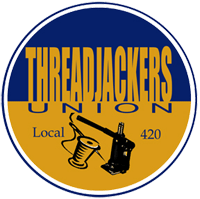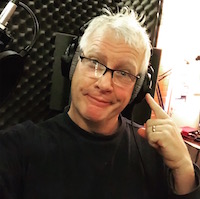| View previous topic :: View next topic |
| Author |
Message |
Neil K. Hess
Contributore Level V

Joined: 13 Dec 2012
Posts: 184
Location: Washington State
|
 Posted: Wed May 16, 2018 7:44 pm Post subject: Post-production effects order? Posted: Wed May 16, 2018 7:44 pm Post subject: Post-production effects order? |
 |
|
So obviously the best thing you can do is to have a clean recording from the get-go, but for those of your post-production experts out there: Is there a "best" order for using de-click, de-ess, de-plosive, normalization, compression etc?
_________________
http://neilkhessvo.com |
|
| Back to top |
|
 |
Art
Contributor III

Joined: 27 Sep 2017
Posts: 78
Location: Atlanta, GA, USA
|
 Posted: Wed May 16, 2018 11:28 pm Post subject: Posted: Wed May 16, 2018 11:28 pm Post subject: |
 |
|
1.) De-plosive. Highlight the area, drop 40 Hz and under by a few dB, and the plosive should disappear. Don't filter out too many dB or you'll have a thin sound.
2.) De-click.
3.) Compress. If your initial wav is really, really low, you might want to bring it up a few dB, maybe +3, before compressing. You definitely don't want to compress after normalizing or you'll have a very loud, distorted wav.
4.) Normalize, but only to -3 dB. This seems to be the standard. It gives a solid sound while leaving headroom for an engineer to add effects. If you're sending it to an engineer to add to a mix, DON'T compress. They'll handle that.
Hopefully this made sense and was helpful.
_________________
Art Howard.com |
|
| Back to top |
|
 |
MBVOXX
Been Here Awhile

Joined: 03 Jun 2008
Posts: 236
Location: USA
|
 Posted: Mon May 21, 2018 7:04 am Post subject: Posted: Mon May 21, 2018 7:04 am Post subject: |
 |
|
Interesting topic...I worked in  for 15 years at a major market ad agency's in house studio. Through the course of recording and producing an average of 40 spots per week, for all medias, we never once used a de-click or de-plosive plug in. We recorded VOs with just Mic & Preamp then applied slight compression in the mixing stage. Since we matched voice to mic, rarely did we need to EQ the voice track unless a special effect was needed. for 15 years at a major market ad agency's in house studio. Through the course of recording and producing an average of 40 spots per week, for all medias, we never once used a de-click or de-plosive plug in. We recorded VOs with just Mic & Preamp then applied slight compression in the mixing stage. Since we matched voice to mic, rarely did we need to EQ the voice track unless a special effect was needed.
IMHO there is way too much overthinking it and probably because there is a plethora of gizmos, a s, plug ins, and low end gear to confuse and bait buyers who are trying to get set up for recording. s, plug ins, and low end gear to confuse and bait buyers who are trying to get set up for recording.
A good mic, a good pre amp, a good room, and a good voice is all it takes. If you have challenges with plosives either learn to work the mic correctly or get a Stedman pop screen.
Everything else out there will rarely improve on that formula. |
|
| Back to top |
|
 |
todd ellis
A Zillion

Joined: 02 Jan 2007
Posts: 10534
Location: little egypt
|
 Posted: Mon May 21, 2018 7:27 am Post subject: Posted: Mon May 21, 2018 7:27 am Post subject: |
 |
|
| Quote: | | If you have challenges with plosives either learn to work the mic correctly or get a Stedman pop screen. |
this.
i apply a VERY light compander & out it goes.
_________________
"i know philip banks": todd ellis
who's/on/1st?
 |
|
| Back to top |
|
 |
Bruce
Boardmeister

Joined: 06 Jun 2005
Posts: 7980
Location: Portland, OR
|
 Posted: Mon May 21, 2018 9:02 am Post subject: Posted: Mon May 21, 2018 9:02 am Post subject: |
 |
|
I agree on doing as little as possible in post production by doing as much as you can before and during recording.
Too much ssssibilance? Change how you read or get those dentures fixed.
Too many plosives? Change how you read and get a good pop filter. I like the ones I got from thehookstudios.com
Too many clicks? Make sure your mouth is clean and then only manually edit out the worst ones. Even pro editors leaves lesser clicks in. They are natural in small quantities.
Small amounts of background noise or hum? Use absolutely the least gating you can. Excessive gating can chop of the beginin_ and ends of _ords. Better yet, deaden the offensive noise first.
If you're sending your audio to a professional studio engineer you should use NO compression, companding, confounding, or normalization. That's their job to make you sound right in their production.
If you're sending to an end client who will just slap your stuff on the air or throw it onto web video untouched, then some modest compression, and or normalization is probably a good idea. If they say nothing about it before or after delivery then you're probably OK.
The biggest caveat is don't junk it up with heavy processing unless that's explicitly what the client wants, like Top 40 radio of the previous century.
B
_________________
VO-BB Member #31 Enlisted June, 2005

I'm not a Zoo, but over the years I've played one on radio/TV. . |
|
| Back to top |
|
 |
Dayo
Cinquecento

Joined: 10 Jan 2008
Posts: 544
Location: UK
|
 Posted: Tue May 22, 2018 1:29 am Post subject: Posted: Tue May 22, 2018 1:29 am Post subject: |
 |
|
Agree that less is more but I don't think I've done a single session without using a high pass filter to clear that low end rumble. These days, it's no eq aside from that filter and only a brick wall limiter to shave at most 1.5 dB.
_________________
Colin Day - UK Voiceover
www.thurstonday.co.uk |
|
| Back to top |
|
 |
jim edgar
Contributor

Joined: 27 Jul 2015
Posts: 40
Location: SF Bay Area, CA
|
 Posted: Wed May 23, 2018 7:36 am Post subject: Posted: Wed May 23, 2018 7:36 am Post subject: |
 |
|
HPF just to get the scummy grunge out. Curve around 50 Hz.
Declick if I'm smacky that day. Manually nick it if it's just one or two.
Normalize to delivery specs/needs.
No compression, generally speaking. Occasionally if I got things a little wacky on a video game audition/session, I might run a light compression pass with settings like a soft limiter to bring the peaks back under control.
Plosives/sibilance? I loosen the Nut Behind The Mic.
_________________
JimEdgarVoices.com | JustAskJimVO.studio | Source-Connect: jimedgarvoices |
|
| Back to top |
|
 |
|



 for 15 years at a major market ad agency's in house studio. Through the course of recording and producing an average of 40 spots per week, for all medias, we never once used a de-click or de-plosive plug in. We recorded VOs with just Mic & Preamp then applied slight compression in the mixing stage. Since we matched voice to mic, rarely did we need to EQ the voice track unless a special effect was needed.
for 15 years at a major market ad agency's in house studio. Through the course of recording and producing an average of 40 spots per week, for all medias, we never once used a de-click or de-plosive plug in. We recorded VOs with just Mic & Preamp then applied slight compression in the mixing stage. Since we matched voice to mic, rarely did we need to EQ the voice track unless a special effect was needed.

